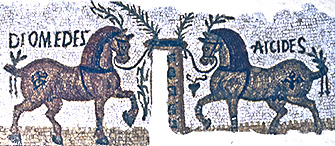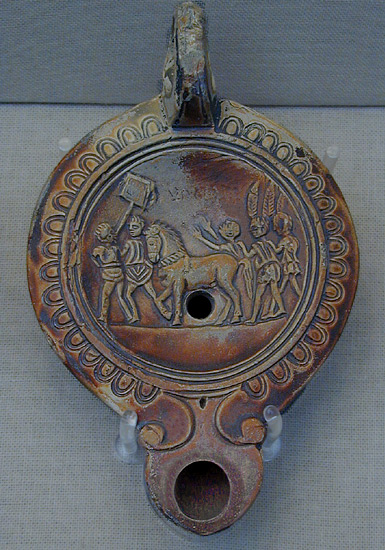

Plenty of Roman race fans could rattle off the names and pedigrees of the lead horse on a winning team. The best and most experienced horse in a team was usually harnessed on the left (the left trace horse), where he could help the other horses negotiate the tight turns. Since chariot races were long and grueling, stamina and responsiveness to commands were more important than absolute speed. A great many inscriptions commemorating charioteers also include the names of winning horses, and some horses even merited their own inscribed tombstones, one of which commemorates an African horse named Speudusa (“Hasty”) who was “speedy as the wind” (CIL 6.10082). Although Speudusa was a mare, most Roman race horses were apparently stallions. These mosaic fragments from the Bardo Museum in Tunis depict two horses decked out for a race; the horses are named after mythological heroes, the warrior Diomedes and the strongman Hercules (“Alcides”). Below is a lamp showing the principal horse of a victorious team surrounded by celebrating fans; the placard would bear the horse's name and the number of victories he had won.
